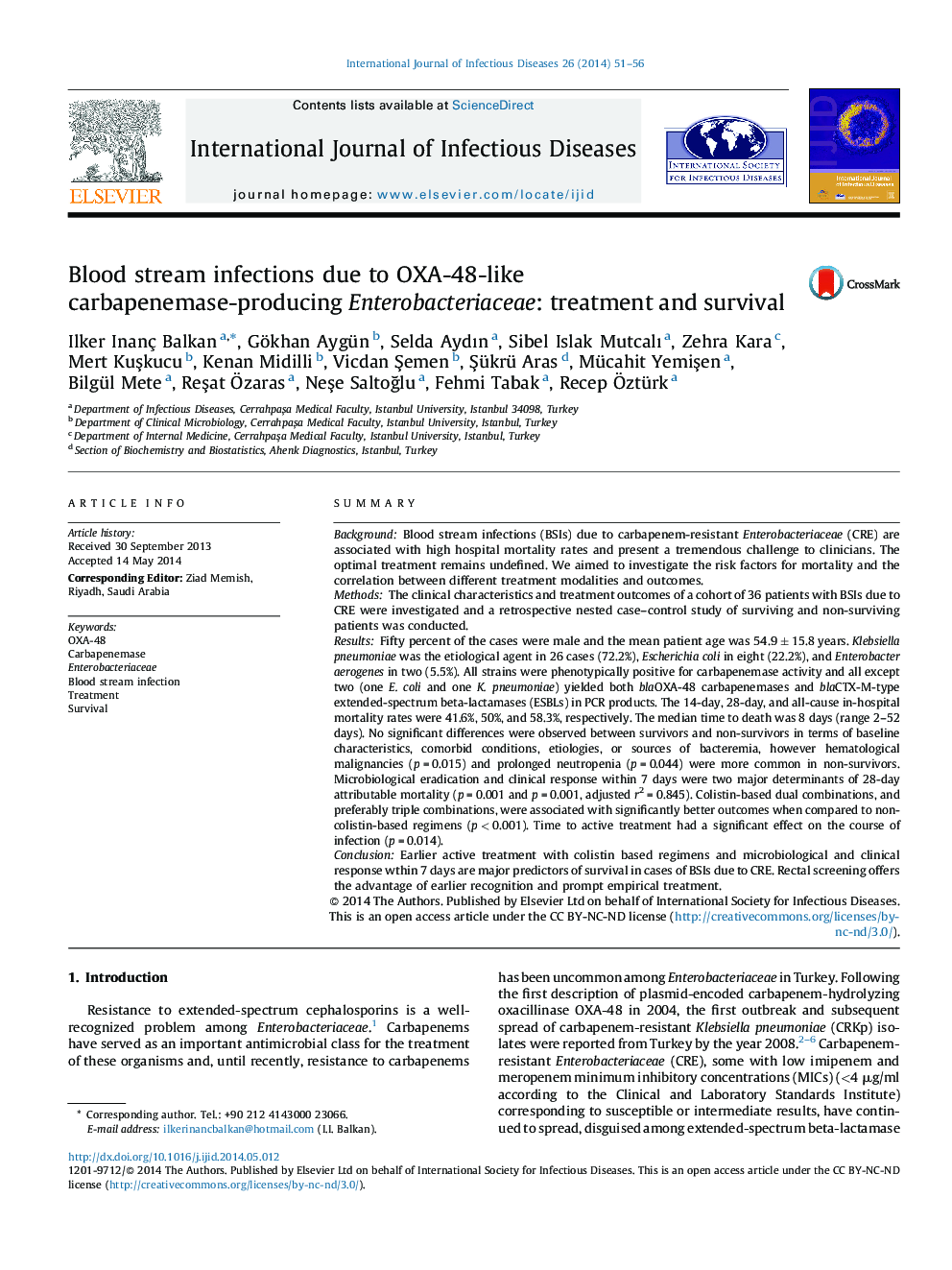| کد مقاله | کد نشریه | سال انتشار | مقاله انگلیسی | نسخه تمام متن |
|---|---|---|---|---|
| 3362496 | 1592069 | 2014 | 6 صفحه PDF | دانلود رایگان |

• Colistin based combinations are more efficacious than non-colistin combinations for BSIs due to CRE.
• Recovering microbiological and clinical parameters within 7 days are major determinants of 28-day survival.
• Early initiation of the effecive treatment is correlated with better outcomes.
• Rectal screening offers earlier recognition and prompt empirical treatment of CRE BSIs.
SummaryBackgroundBlood stream infections (BSIs) due to carbapenem-resistant Enterobacteriaceae (CRE) are associated with high hospital mortality rates and present a tremendous challenge to clinicians. The optimal treatment remains undefined. We aimed to investigate the risk factors for mortality and the correlation between different treatment modalities and outcomes.MethodsThe clinical characteristics and treatment outcomes of a cohort of 36 patients with BSIs due to CRE were investigated and a retrospective nested case–control study of surviving and non-surviving patients was conducted.ResultsFifty percent of the cases were male and the mean patient age was 54.9 ± 15.8 years. Klebsiella pneumoniae was the etiological agent in 26 cases (72.2%), Escherichia coli in eight (22.2%), and Enterobacter aerogenes in two (5.5%). All strains were phenotypically positive for carbapenemase activity and all except two (one E. coli and one K. pneumoniae) yielded both blaOXA-48 carbapenemases and blaCTX-M-type extended-spectrum beta-lactamases (ESBLs) in PCR products. The 14-day, 28-day, and all-cause in-hospital mortality rates were 41.6%, 50%, and 58.3%, respectively. The median time to death was 8 days (range 2–52 days). No significant differences were observed between survivors and non-survivors in terms of baseline characteristics, comorbid conditions, etiologies, or sources of bacteremia, however hematological malignancies (p = 0.015) and prolonged neutropenia (p = 0.044) were more common in non-survivors. Microbiological eradication and clinical response within 7 days were two major determinants of 28-day attributable mortality (p = 0.001 and p = 0.001, adjusted r2 = 0.845). Colistin-based dual combinations, and preferably triple combinations, were associated with significantly better outcomes when compared to non-colistin-based regimens (p < 0.001). Time to active treatment had a significant effect on the course of infection (p = 0.014).ConclusionEarlier active treatment with colistin based regimens and microbiological and clinical response wthin 7 days are major predictors of survival in cases of BSIs due to CRE. Rectal screening offers the advantage of earlier recognition and prompt empirical treatment.
Journal: International Journal of Infectious Diseases - Volume 26, September 2014, Pages 51–56